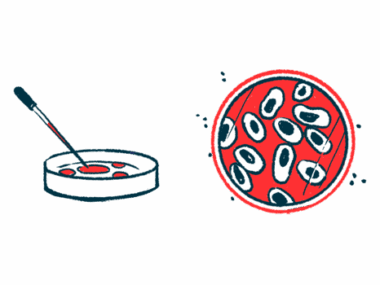New Human Cell Model From Bit.Bio Aims to Advance Research, Therapies
Written by |

Bit.Bio has launched a new human cell model to advance research and accelerate therapeutic development for Huntington’s disease.
The cells, called ioGlutamatergic Neurons HTT-50CAG/T, are engineered to carry a specific mutation in the HTT gene that causes Huntington’s. By carrying the same genetic mutation — a condition called isogenic — the cells serve as a potential new robust and scalable model to study the mechanisms of the disease in the lab.
“ioGlutamatergic Neurons HTT-50CAG/WT is the first in a series of neurodegenerative disease models being launched by Bit.Bio, providing a reliable, commercially available source of consistent and scalable cells,” Farah Patell-Socha, vice president of research products at Bit.Bio, said in a press release.
“By offering more physiologically relevant disease mutations, the disease model portfolio has the potential to help address current gaps facing the successful translation of research into the clinic, crucially by providing isogenic cell models we are delivering a solution that has the potential to boost drug discovery and development,” Patell-Socha added.
The ioGlutamatergic Neurons HTT-50CAG/WT were engineered to carry 50 stable repeats of a portion of DNA, called CAG triplets, within the HTT gene.
The glutamatergic neurons were generated from human induced pluripotent stem cells (iPSCs) using Bit.Bio’s reprogramming technology, called opti-ox. The cells rapidly mature and become functional glutamatergic neurons. The mutation in the HTT gene was introduced via the CRISPR/Cas9-based gene-editing tool.
“Our opti-ox technology allows the development of consistent and scalable biological standards that can support the evolution of a new generation of medicines,” said Mark Kotter, CEO and founder of Bit.Bio. “It adds depth to our broadening R&D cell type product pipeline.”
Of note, iPSCs are cells that have been reprogrammed back into a stem cell-like state, which allows for the development of an unlimited source of almost any type of human cell. Glutamatergic neurons are nerve cells that release the neurotransmitter glutamate. Prior research has shown that glutamate signaling is abnormally active in Huntington’s disease.
The company notes that the ioGlutamatergic Neurons HTT-50CAG/WT are well-controlled for the specific mutation, are easily maintained in the lab, and can be expanded into high numbers.
Those factors make this new cell model a “high quality human model for the study of Huntington’s disease,” Bit.Bio states on its website.
Moreover, the same glutamatergic neurons also are available without the HTT mutation — called wild type. These wild-type neurons can serve as controls and aid in the development of therapies that target disease cells only.
“Bit.Bio’s mission is coding cells for novel cures,” Kotter concluded. “The launch of our Huntington’s disease model provides the industry with an advanced cellular tool to support the study of a devastating condition with high unmet clinical needs.”






